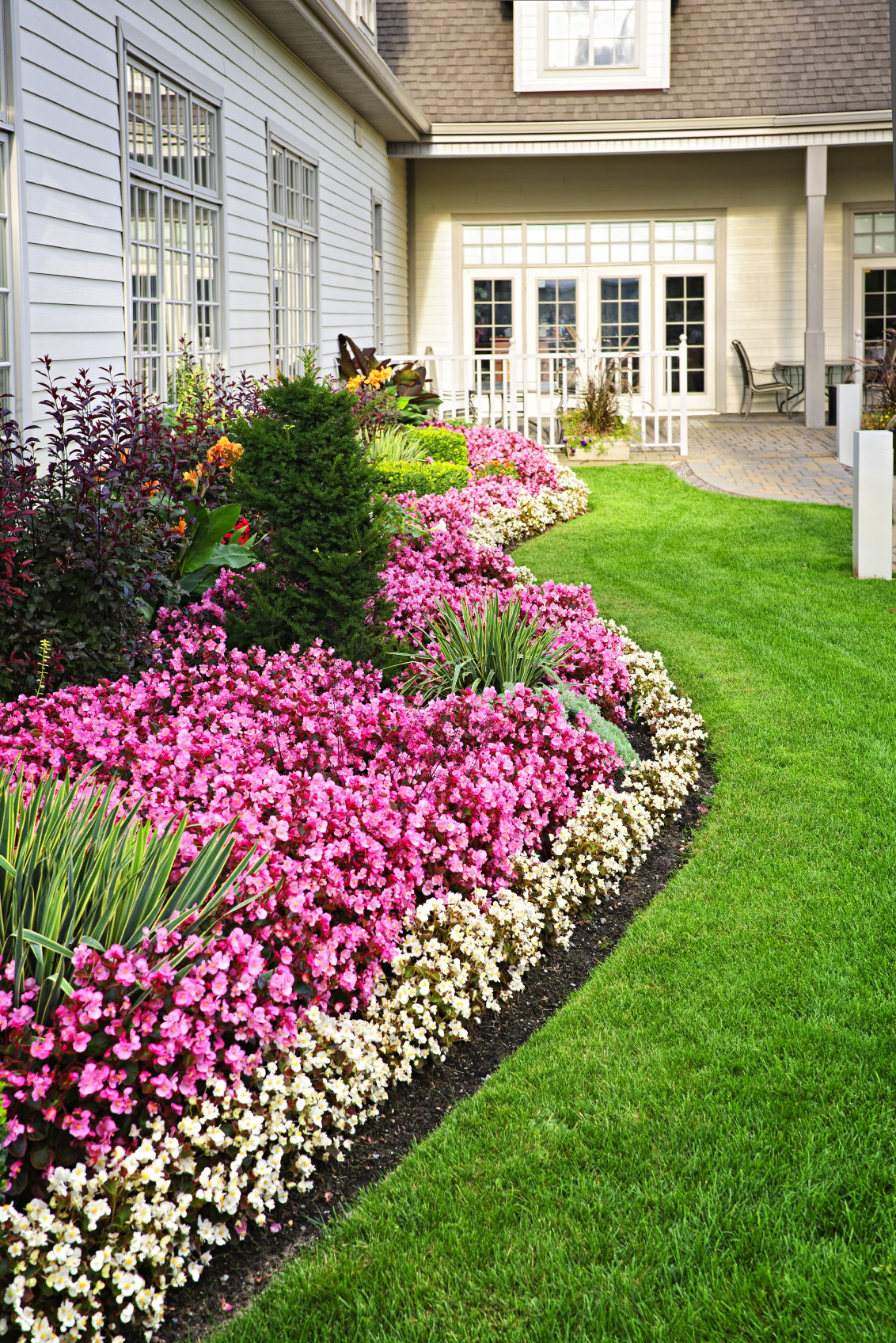Elevate Your Residential or commercial property's Aesthetic With Lasting Landscape Design Styles and Eco-Friendly Practices

Benefits of Sustainable Landscaping
Carrying out lasting landscaping techniques not only saves all-natural resources however additionally promotes biodiversity and improves overall environmental wellness. One significant advantage is the decrease of water usage through the usage of drought-resistant plants, rain gardens, and efficient watering systems.
Additionally, sustainable landscape design can improve dirt health and wellness by minimizing using chemical fertilizers and chemicals, thereby developing a much healthier atmosphere for plant development and useful dirt organisms. This, subsequently, improves the total resilience of the landscape to hold up against environmental stressors and environment change effects - landscaping company Jacksonville. In addition, sustainable landscaping techniques can attract diverse wild animals, consisting of pollinators like and butterflies, promoting a more vivid and balanced ecosystem within the building
Incorporating Indigenous Plants
To construct upon the benefits of lasting landscape design, a calculated focus on including indigenous plants can better boost ecological resilience and promote biodiversity within the landscape. Indigenous plants are varieties that normally take place in a certain location and have actually progressed to prosper in the regional climate, soil conditions, and environment. By consisting of indigenous plants in landscaping designs, home owners can reduce water use, decrease the need for chemical pesticides and fertilizers, and sustain the regional wildlife populace.
Incorporating indigenous plants likewise helps in protecting the special character and identity of an area's plants. These plants commonly require much less upkeep when established, making them a lasting and affordable landscape design service over time. Furthermore, indigenous plants can attract native pollinators like bees and butterflies, contributing to the total health and wellness of the community.
When picking indigenous plants for landscaping tasks, it is vital to select varieties that are well-suited to the details environmental problems of the website. Consulting with regional nurseries or organic gardens can supply valuable support on selecting the ideal native plants for a specific location. By integrating indigenous plants right into landscaping styles, homeowner can create lovely, sustainable outside rooms that benefit both the community and the atmosphere.

Water Preservation Strategies
Effective irrigation techniques play an important function in lasting landscape design practices, ensuring optimum water preservation efforts in outdoor rooms. Carrying out methods such as drip irrigation, rainwater harvesting, and clever watering systems can substantially minimize water wastage while keeping a healthy and balanced landscape. Drip watering supplies water directly to the origins of plants, decreasing evaporation and runoff. Rain gathering involves gathering rainwater from roof coverings and keeping it for later use in watering, minimizing the reliance on metropolitan water sources. Smart irrigation systems utilize weather information and soil wetness degrees to change watering schedules, stopping overwatering and promoting water effectiveness.
Along with innovative watering methods, xeriscaping is an additional water-saving landscape design method that concentrates on making use of drought-resistant plants, mulch, and reliable irrigation to produce a low-water landscape layout - lawn cleanup Jacksonville. By selecting native plants that are fit to the neighborhood climate and dirt conditions, home proprietors can minimize the need for excessive watering, ultimately preserving water and promoting a lasting exterior setting
Eco-Friendly Hardscaping Ideas
Enhancing outdoor rooms with environmentally friendly hardscaping functions can add significantly to sustainable landscape design methods. When taking into consideration hardscaping components, decide for products like recovered wood, recycled concrete, or natural rock to lessen ecological influence. These products not just include a special aesthetic attract your outside space but also reduce the demand for brand-new sources extraction.
Carrying out permeable paving options such as crushed visit here rock or absorptive concrete can assist decrease water overflow and promote groundwater recharge. These alternatives allow rainwater to leak into the ground, protecting against disintegration and lessening the problem on stormwater systems.
Incorporating native plants into hardscaping layouts can even more boost eco-friendliness by sustaining local wildlife and reducing the need for too much watering or chemical treatments. By including vertical yards or eco-friendly wall surfaces, you can introduce extra greenery right into urban setups, improving air top quality and biodiversity.
Incorporating energy-efficient lights, such as solar-powered LEDs, into hardscaping styles can reduce power consumption and reduced other your property's carbon footprint. Focusing on environment-friendly hardscaping ideas not only improves the beauty of your outdoor room however additionally demonstrates a commitment to ecological stewardship.
Upkeep Tips for Sustainable Landscapes

Routinely prune plants to promote healthy and balanced development and protect against overgrowth that can lead to pest infestations or diseases. Use organic fertilizers to nurture the soil and plants without hazardous chemicals that can leach into the atmosphere.
Final Thought
To conclude, click for more info lasting landscape design techniques supply numerous advantages for homeowner, from boosting the visual charm of the surroundings to promoting environmental preservation. By including indigenous plants, applying water preservation strategies, and making use of eco-friendly hardscaping concepts, homeowner can develop lovely landscapes that are additionally ecologically accountable. With proper maintenance, lasting landscapes can grow and add to a much healthier community for both human beings and wild animals.
Moreover, sustainable landscape design can enhance soil wellness by decreasing the usage of chemical fertilizers and chemicals, therefore producing a healthier environment for plant development and useful soil microorganisms.To develop upon the benefits of lasting landscaping, a tactical emphasis on integrating native plants can even more enhance ecological strength and promote biodiversity within the landscape. By consisting of native plants in landscaping layouts, residential property owners can lower water usage, minimize the requirement for chemical pesticides and fertilizers, and sustain the local wildlife populace.
These plants commonly require much less upkeep when developed, making them a sustainable and cost-efficient landscaping remedy in the long run. By incorporating native plants into landscape design designs, building owners can produce beautiful, lasting exterior spaces that profit both the area and the environment.